|
|
Greetings to all readers.
Happy Sake Day a little bit late. Yep, October 1 of each year is Nihonshu no Hi, or Sake Day, so named because the old character for “toh” or 10 (as in the tenth month) is almost identical to the character for sake. And there were at least four - count ‘em - Sake Day celebrations in the US. New York, Seattle, San Francisco and Hawaii all had sake shop proprietors having celebrations on that most special of days. A great harbinger of the future for sake around the world!
While perhaps most readers are not aware of it, my other gre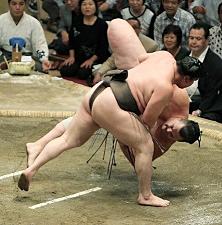 at
passion in Japan is sumo - or at least watching it. (I leave the actual doing of it to those more qualified - and much larger - than myself!) While there is a lot of upheaval in the sumo world these days (not unlike the sake world, I daresay), the top guy is breaking records for consecutive wins, and heading toward the longest streak ever.
The just-ended autumn tournament has always been my favorite, and I tend to rearrange life and work around watching it for the 15-day period across which it runs. Upheaval and mediocrity in most of the ranks notwithstanding, I finally feel like the fall has fully settled in. at
passion in Japan is sumo - or at least watching it. (I leave the actual doing of it to those more qualified - and much larger - than myself!) While there is a lot of upheaval in the sumo world these days (not unlike the sake world, I daresay), the top guy is breaking records for consecutive wins, and heading toward the longest streak ever.
The just-ended autumn tournament has always been my favorite, and I tend to rearrange life and work around watching it for the 15-day period across which it runs. Upheaval and mediocrity in most of the ranks notwithstanding, I finally feel like the fall has fully settled in.
Indeed, it has. Most breweries are seeing the preparations for the seasons beginning. Some will have started already, others are still getting the kinks out. Let us hope and pray that all have a safe and productive brewing season.
There are still about ten seats available for the Sake Professional Course to be held in Portland next Month, November 7, 8 and 9, so hurry to reserve your seat for the most comprehensive sake education on the planet, guaranteed.
Finally, there are a good dollop of sake-related events happening soon, so check out the events section for more information on those.
Enjoy the newsletter,
Warm regards,
John
 
|

Toji Today
The State of the Artists
We’re all in this for the same reason: ‘cuz we like to drink sake. But surely we find some of the peripheral stuff - culture and history - interesting as well.
I was just down in Shiga Prefecture, north of Kyoto, at the Shichihon Yari (“Seven Spearsmen”) brewery chatting with the de facto commander-in-chief, Tomita-san. I was asked to go down with a production company that is making a video on sake for the overseas market, starting in nearby Asia. After filming ended, as the skeleton crew and I sat sipping some sake, the cameraman spoke up.
“You know,” he began, “when you and he were going off on those deep tangents about which rice types taste how, and which dissolve better during fermentation, and soil quality and all that, I couldn’t really follow it well. But the truth is, I wanted to be able to do so. I want to know that stuff! I mean, I like sake, but I want to know more of the geeky stuff!” The others readily agreed. Indeed, sake is more than just a drink!
One such peripheral cultural aspect is the world of the toji, or master brewers. I have written about toji and their guilds several times before (see the “further reading” links at the end of the article), but the recent state of the industry - and the way it keeps changing - indicates that it is worthwhile and interesting to address it again.
As a quick review, there is one toji (master brewer) per kura (brewery). He (or she, as of very recently) is in charge of, first and foremost, the day to day decisions in brewing the sake. What sake is brewed, in what order, and in what way. Milling, yeast, method and timing at every single step are some of the decisions left in the toji’s able hands.
Long ago, he did more than that. He hired and fired as well. Paperwork
was another responsibility: telling the government what will be brewed this year, then reporting that when it is done. Status was high; he was revered in his hometown enough that others would kowtow to him a bit to stay in his favor when brewing season came ‘round.
But all that has been changing, sometimes slowly sometimes less so, for decades. There are many reasons for this. One is that sake consumption is on the decline, and the number of breweries drops every year. There is less of a demand for sake, and therefore master brewers. Another is that the work is hard: basically 14 hours a day for six months straight - traditionally living in the brewery, away from your family.
Yet another reason is that today, anyone can do it. Well, OK, that’s a crock. But in these modern times there are textbooks and manuals and reams of public data and actual schools for teaching sake brewing. Education and training are widely available, unlike long ago. While nothing can replace the intuition that comes from experience, it sure is not like it was in centuries past, when most methods and processes were closely guarded secrets amongst the toji guilds. The information available - and the ability to share it quickly - means that it is much easier for someone to learn to brew well provided they have access to enough support.
Then there are economic realities, of which there are many. Brewing companies can no longer let their livelihood sit in the hands of a seasonal employee. “If he goes, we are done for!” does not bode well for sustained and stable growth in any industry! And the economics of modern times means that brewing families are more and more trying to maximize effectiveness and efficiency, which means using local, year-round employees with good sake-related educations, if not family members themselves.
Long ago, the toji brewed, and the owner sold. The owner had no business being in the brewing part of the kura building. His presence would make the toji and other brewers nervous, causing them to think, “What’s he doing in here? He’s the owner; we’re the ones dong the brewing!” Yeah, well, not anymore.
And it is not as if sake is losing a step because of these changes. Far
from it! Very often, in fact, the younger home-grown brewers have a better education and often times better skills. One older toji at a larger kura, where he has been for decades upon decades, humbly admitted to me that he could not taste sake as well as the owner’s son.
“Kind of embarrassing when you’re in charge of brewing and the head of sales can out-taste you! He makes me feel as if I couldn’t taste my way out of a wet origami crane! And the technical terms these young whippersnappers use! I don’t know what they are saying half the time, with these long names for bad micro-organisms and all. Back in my day, we just called ‘em the evil humours.” (Admittedly, it was the Japanese equivalent of that concept!)
Statistically, about one-third of the actively brewing kura in the country no longer have toji from the traditional guilds, either using local hires or family members - often El Presidente himself. And this number is sure to increase as well. I was recently told by one toji that an associate of his (i.e. a toji at another place nearby) had the kura close down on him. So he went in search of another place to brew. And this toji with 20 years of experience could not even find a job in the industry! That deadly combination of decreased production, less places at which to work, and increasing do-it-yourselfers made it difficult to find a job as a master sake brewer. (He eventually did, I heard.)
Surely, these changes will continue. I do not mean to imply that they are good, but perhaps they are unavoidable. The old guilds ensured some prosperity for the local folks, but market and societal changes made that moot. They used to guard secrets, but science stopped that. So much has changed in both Japanese society and the world at large that it is probably inevitable. And who knows: they may survive in some form and have new life breathed into them.
So as we enjoy sake for what it is, what we can all do is remember and respect the cultural periphery of the toji, and their wondrous skills and history.
Further reading:
All About Toji
The Tail of the Toji
Toji Trials and Tribulations
|
 Sake Basics Sake Basics
Sake Temperatures
At what temperature should you enjoy your sake? If you are new to sake
you may not get it - why so much information surrounding sake pictures is hot, yet the good stuff is enjoyed cold - or so it seems. What gives?
Admittedly over the centuries most sake was consumed warm. Why? Decidedly not to hid the flaws, as some would say. But rather because consuming warmed food and drink was deemed better for one's health, a concept imported from China.
But along comes ginjo-shu and its fruity, flowery, delicate aromas and flavors. Heat that and you bludgeon all that hard work and craftsmanship out of existence.
And this leads to a rule of thumb: enjoy your premium sake, such as ginjo-shu, slightly chilled. Not just out of the 'fridge, but rather closer to white wine temperature. If that is true, why do we see so much hot sake around? Because fruity, flowery, refined sake like ginjo has only been around about 40 years. Also, do bear in mind that cold sake is not new at all - it has been around for centuries as one way to enjoy sake. Perhaps not the most common way, but nevertheless folks did enjoy chilled sake from time to time in days of olde (when samurai were bold...).
Note 1: There are exceptions! There are premium sake, even ginjo, even some daiginjo f'gad's sake, that are enjoyable warmed. Why? What makes them so? Nothing more than the flavor and aromatic profiles. Such sake have earthier, perhaps more acidic, and sometimes sweeter flavor profiles that meld into something even more enjoyable when warmed. How do you know if a sake will work when warmed? Sometimes it is on the label as a producer's recommendation. Other times experience and preference will let you know.
Note 2: Any given sake will taste differently at slightly chilled, room and higher temperatures. By all means, explore and experiment!
|
 Did You Know? Did You Know?
Start with the rougher stuff...
The brewing season is about to begin - and in fact has begun at many
places. At all kura, the pattern is the same: start with the rougher stuff for the first few batches, then make the best stuff in the middle of the season, then finish off with more lower grade sake.
Why? Many reasons. Each year is different, and toji and brewers need to feel out this year's rice. How does it dissolve? How fast does it absorb water? How is the starch or fat or protein or potassium content? By starting with less premium sake they can get a feel on how this year's rice is behaving.
They can also get a feel for this year's climate, this year's brewing staff and the condition of the stuff in the brewery. Once all this is ascertained they can move into the premium sake with a bit more confidence.
And, of course, there is ambient temperature. It is warmer in the early fall and early spring, and much colder in the dead of winter. Ginjo and other premium sake needs colder fermentation temperatures, which brewers do not have until mid-winter.
As the saying amongst brewers goes, "Every year, it's back to first grade." At least for the first few batches it is. Then most of them jump straight to university.
|
 Announcements and Events Announcements and Events
Sake Professional Course, Portland Oregon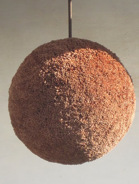
November 7 - 9, 2010
On November 7, 8 and 9, I will hold the next Sake Professional Course at the
Portland Marriott Downtown Waterfront, in Portand, Oregon. This promises to be a
special one, and the closest to date to the versions of SPC held in Japan. Why?
Because we will have the chance to visit a sake brewery in action, thanks to the
cheerful cooperation of SakeOne nearby, and also because the wonderful array of
sake joints in Portland will allow us to enjoy an evening meal with good sake
all three nights of the course.
There are but ten seats remaining open, and you
can reserve a spot with an email of that purport to me at
info@sake-world.com. It is expected to fill up quickly, so make
your reservation now.
This
promises to be the best SPC held in the US to date. Whether you work with sake,
or are just obsessed with it (either will do!), you'll not want to miss this
special running of the Sake Professional Course.
Sake and Pottery Seminar, October 22
On the evening of Friday, October 22, Japanese pottery expert Robert Yellin will hold the first sake and pottery seminar in too long a time, as the first in our revival of the long-running series. The seminar will be held at Sake Bistro W in Kasumigaseki (a first for that venue!) from 7pm to 9pm, and the cost of the evening is 7000 yen for two lectures, as much as you like of six sake, and dinner as well.
Robert Yellin will lecture on "Shuki (sake vessels) and the Seasons."
I will be giving a presentation on "The State of The Sake Industry: It ain't pretty, and here's why it ain't." While I may polish my English for the evening's talk, it will be the first time I present this somewhat controversial information.
Those interested can make a reservation with an email to info@sake-world.com, or to me directly if you have questions.
Kobe Sake Event: Nihonshu Lovers Kobe
On October 31, from 1:00 pm until 6:00 pm, at Kobe Sanpo Hall, a
half-dozen sake-related restaurants and retailers are combining to put together a 500-person event called Nihonshu Lovers Kobe. A ticket to get at the 60+ sake from the likes of the list below is a mere 3000 yen, and food tickets for are available for 250 yen.
The kura in attendance will be: Akishika, Ishizuchi, Raiyaku, Kenbishi, Kokuryu, Tengumai, Meito Masamune, Tenju, Rumiko no Sake, Yaegaki, Dassai, Senkai, Kame Izumi, Fukuju, Banshu Ikkon, Chikusen, Shinomine, Miyako Bijin, Oze no Yukidoke. With the exception of Tenju and that last one, none of them are anywhere near Eastern Japan, all are Western Japan. Expect some seriously weighty sake!
Learn more here: http://sakebouzu.com/
For tickets, contact Mr. or Ms. Harabe at Nihonshu Bar Tachikiya at 078-392-8511. That stellar list above makes this highly recommended.
Nihon Ginjo-shu Kyoukai
The Nihon Ginjo-shu Kyoukai, that wonderful group holding twice-yearly big sake tastings, will have their fall shindig on October 19. The afternoon session runs 3:00 to 5:00, and the more lively evening session runs from 6:00 to 8:00. The event costs 4000 yen for upwards of 250 sake, and the evening session you get a little dish of nibbles too and the cost is 5000 yen and will be held at the Hotel Metropolitan Edmond in Iidabashi.
You can just show up for this one, or save 500 yen by paying in advance. Learn more here: www.ginjyoshu.jp/event/10oct_tko/index.php
Sake Tours!
Please join us for a very special journey through the regional
brewing and culinary traditions of Japan. Tour destinations are filled with moments you cannot experience otherwise. In 2011, we will return to San-in, the land of myth. And, we are adding a tour of the northern snow country of Akita for special breweries and onsen.
Meet and speak directly with artisans to appreciate their history, philosophy, and the art of brewing. Learn from the world's best sake educator, John Gaunter, and share the passion of brewers for their craft. Then, wind down at an onsen to relax, and simply have fun! Learn more at http://saketours.com .

Joy of Sake, November 2, 2010
On the evening of Tuesday, November 2, 2010, the Joy of Sake, that
venerable sake appraisal that has been running in Honolulu, San Francisco and
New York, makes its Tokyo debut. The Joy of Sake event blindly judges upwards of
300 sake using a team comprised of experienced sake tasters from both the US and
Japan. Following that, the entries are open to public tasting augmented with
food from great restaurants.
Also, the Joy of Sake is operating a tour to attend the Tokyo
event, replete with several options including sake pub tours and sake brewery
tours. To learn more about that, please visit: www.joyofsake.com/tour2010/ soon. Here is a bit more from one of the directors, Chris Pearce, about the Joy of
Sake events in Tokyo:
Joy of Sake in Tokyo, TOC Building,
Gotanda, 6-9PM
Y8,000
This year is the 10th anniversary
of The Joy of Sake, which was first held in Honolulu in 2001. In observance of this milestone, the Joy of
Sake is taking what The Japan Times recently called its "roving sake party"
to Tokyo on November 2.
In addition to the entries from the U.S.
appraisal, there will be regional sake-tasting booths set up by
different prefectures. Twelve restaurants are participating, with
French, Italian and Chinese
appetizers in addition to Japanese dishes.
The Joy of Sake is a non-profit organization for the purpose ot sake
education. In keeping with this mission, it has organized a sake tour from
Honolulu, Los Angeles and New York to attend the Tokyo
event.
Information on the tour is on the joyofsake.com website.
Sake Educational Blog
I
have begun a sake educational blog, sakeworld.wordpress.com/ that will
have weekly posts on the fundamentals of sake - plus a bit. Some of
the content will be similar to some of what is in this newsletter, but a
shorter, more concise, more focused educational angle. View it and
subscribe to it here, and be sure to check it out while it is in its nascent stages, so as to not miss a single entry!
|
 Sake Education Central Sake Education CentralWant to learn all the basic sake facts quickly? Just what you need to enjoy it immediately? Need neither too much nor too little information? Grab The Sake Notebook. Download it at 4pm an d you will be ready to enjoy sake at dinner. Guaranteed!
The Sake Production Slideshow allows you to sit back, relax and watch a beautiful, condensed powerpoint presentation of how sake is produced.
Japanese for Sake Lovers not only teaches sake pron unciation, it includes a native speaker pronouncing the words with a time lapse for your practice. You not only learn how to speak “sake”, you learn proper Japanese pronunciation without the cost of a Japanese language course!
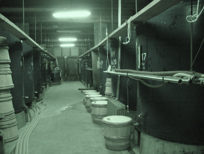 Do you w ant to know the “behind the scenes” secrets of the master brewers? Read the untold stories of sake brewers in Sake’s Hidden Stories. Each of the dozen-odd stories introduces a brewer, the sake, and tons of subtle, hidden insights and sake information you'll not find in any other book about sake. Guaranteed.
Going to Japan or a Japanese restaurant? Perhaps you’re in the mood for sushi and sake at home. Do you know what to look for and how to ask for it? You will when you tote around more than 200 terms in your pdf or iPhone with The Sake Dictionary.
Product Highlight: Japanese For Sake Lovers A Guide to Proper Pronunciation Here it is: something that ensures you will enjoy your sake experience more and more - a short, concise instructional guide on how to properly and naturally pronounce the Japanese language, sake brand names, and all the terminology that is a part of the sake world. With the help of this little course, you will sound like a native when talking about sake.
No more butchering sake names in Japanese! Learn how to properly pronounce the sake you love!
Japanese for Sake Lovers consists of a short text and three audio files. It all begins with a guide to the theory of pronouncing Japanese, which you will soon realize is surprisingly simple. Following that, you will have the opportunity to practice pronunciation of all the important terminology surrounding sake, and dozens of brand names that cement in your mind the principles, fundamentals, and idiosyncrasies of pronouncing Japanese.
This is not a language text. You will not learn grammar or much 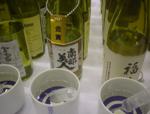 vocabulary outside of sake-specific terms; although, it does include a handful of phrases to help you navigate your way to sake bliss in Japanese when at a sake pub. It is augmented by three audio files that allow you to practice, repeating the words and phrases after a native speaker.
Go here now to order your copy for $14.99, and feel one step closer to the beverage you love – guaranteed.
*Satisfaction
Guaranteed*
Should any of the above products not be to your immense satisfaction, your money will be cheerfully refunded, no
questions asked.
|
Stay Subscribed!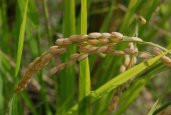
Are you not getting this newsletter? I realize that is like asking that "those not present please raise your hand," but for future reference, should you spontaneously stop receiving this newsletter, please go here and sign up again. Should that not work, please go to www.sake-world.com.
Email newsletter services are very careful not to be considered spam enablers, but the problem is that often very valid email addresses come back bounced as invalid. It is an unavoidable problem. So if you or someone you know is not getting this, or stop(s) receiving it inexplicably, please do take a moment to double check that you are still subscribed.
Sincere apologies for the hassle, mixed with gratitude for reading this newsletter.
|
I hope you have found the above information helpful and entertaining. For more information about all things sake, please check out www.sake-world.com. Until next month, warm regards, and enjoy your sake. 
Questions and comments should be directed to John Gauntner, at this email address.
All material Copyright, John Gauntner & Sake World Inc.
Regards,
John Gauntner
Sake World, Inc
 . . 
|
|
